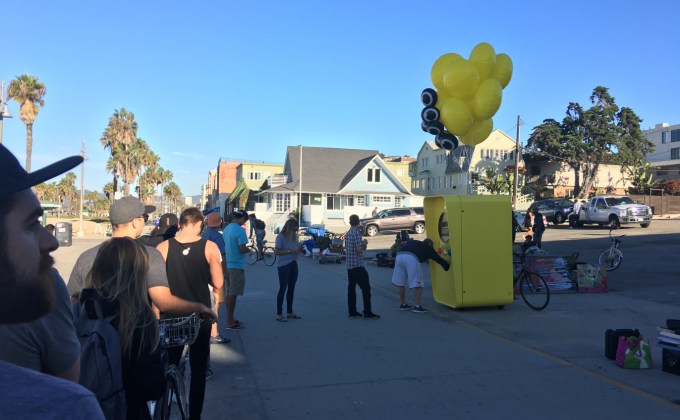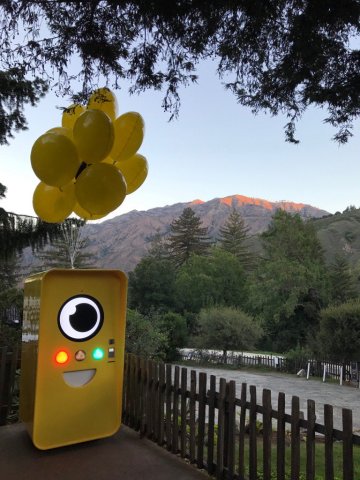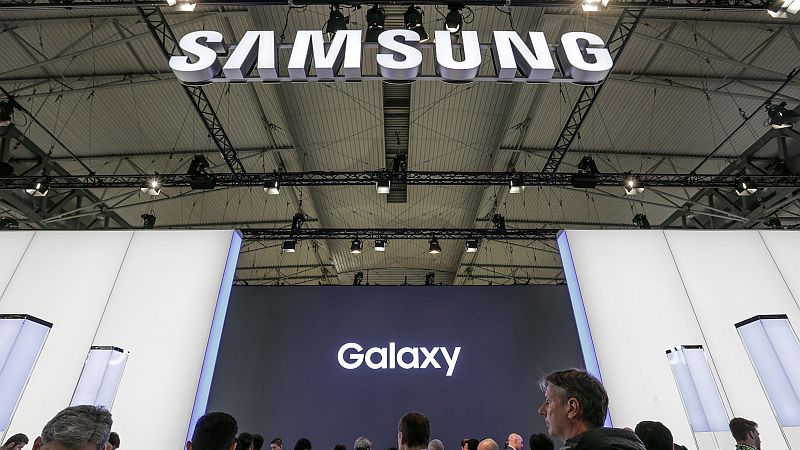Huawei is in a tough position. The company is coming out of China with no strong presence in the U.S. market, and yet it prices its phones similarly to top competitors from Samsung and Apple. To beat the best, Huawei needs to be better than the best, and by a sizable margin. With each new phone, Huawei is a bit closer to that goal, but it never quite reached it.
Enter the Huawei Mate 9. After rumors of crazy-good specs, this was the device that had all the makings of becoming the best phablet in the world, and with the Samsung Galaxy Note7 out of the picture, the task appeared to be even easier. And while the Mate 9 is a very good phone, it will only be the best for some users: those who care deeply about battery life, fast charging and some niche features like black and white photography.
The Huawei Mate 9 is a 5.9-inch phone with the latest octa-core Huawei 960 Kirin chipset (paired with a Mali-G71 graphics chip), it's got 4GB of RAM, 64GB of storage (expandable via microSD cards), has dual cameras on the back (20- and 12-megapixels), an 8-megapixel selfie shooter, a fingerprint sensor, and runs on Android 7.0, skinned with Huawei's latest EMUI 5.0 user interface.
On paper, that's the best Android phone around, if we disregard two specs: its huge screen only has a full HD resolution (many competitors, including the now-discontinued Note7, have Quad HD resolution), and it's not waterproof. Huawei pointed out that this phone is currently the top dog in Geekbench's multi-core test, and I've confirmed this to be the truth.
Huawei Mate 9 scores amazingly well in Geekbench 4's multi-core test; the score is a bit less impressive (but still very good) in the single-core test. For comparison, these scores make it the top Android phone out there; compared to the iPhone 7, it wins in the multi-core test but lags behind in the single-core test.
Synthetic tests like this one don't tell the full story, but the Mate 9 did feel fast and smooth, no matter what I threw at it.
Good but generic design
All the Huawei phones I've reviewed in the past couple of years have had exceptionally good build quality, and the Mate 9 is no exception. It just feels rock-solid.
The design, however, is nearly the same as the design of its predecessor, the Mate 8. Yes, the bezels are thin, the speaker grille is a bit more pronounced, the edges are ever-so-slightly curved, but these days you need to do more to stand out. Place an iPhone 7 or a Samsung Galaxy S7 Edge next to it, and both will inspire more lustful sighs.
A big part of the smartphone experience these days is the screen, and as I've said many times, I don't mind the 1,920 x 1,080 pixel resolution. That's the same resolution as the iPhone 7 Plus, and no one is complaining. The screen is also brighter than on any other Huawei phone I've seen. And while earlier Huawei phones have had some problems with visibility in the sunlight, the Mate 9 appears to be better (but not perfect) with that regard.
Great battery life and insanely fast charging
One benefit of having a lower-resolution screen (it feels silly calling full HD resolution on a 5.9-inch screen "low," but that's just where we are these days) is better battery life. The huge, 4,000mAh battery also helps, and so does Huawei's SuperCharge charger that promises a full day's worth of battery life in just 20 minutes of charging.
In my testing, the battery life was not as impressive as on the Huawei Note 8 (which also has a 4,000mAh battery), but it was still great. The phone never lasted less than a day, and often I'd still have more than 30 percent of battery life left when I went to sleep.
The super-fast charging is even better. While writing this review, I started charging the phone at 10 percent, and it took just two hours to bring it to 100 percent. The charger is a bit bulkier than you'll get with most phones, but the tradeoff is worth it. Often, I forget to charge my phone and need a quick charge before going out. With this thing, I easily got 20 or 30 percent worth of battery life by the time I brushed my teeth and put on some clothes.
About that dual camera
This is where Huawei Mate 9 stumbles a bit. Huawei had a big head-start on the iPhone when it comes to dual cameras; the Huawei P9 had a 12-megapixel, Leica-branded, dual camera five months before iPhone 7 Plus did.
The Leica-branded dual camera is positioned above the phone's super-fast fingerprint sensor.
On paper, Huawei Mate 9 sounds like it should annihilate every camera out there. It has optical image stabilization, an advanced bokeh mode and a 20-megapixel sensor.
But here's the problem: Only one of the cameras has a 20-megapixel sensor, and it only takes pics in monochrome. The other sensor is 12 megapixels, meaning that color photos on the Mate 9 cannot go beyond 12 megapixels; just like on the Huawei P9. Of course, the iPhone 7 Plus boasts the same resolution, so this is not awful by any means, but it just feels like wasted opportunity.
Before we dive into the details of photo quality (and there's a lot to cover), there are a few more things to mention. The bokeh mode only works well in ideal conditions, with the subject of the portrait near and flat towards the camera, and the background far in the distance. Any other conditions and you'll likely to see strange blurry patches in the photo and imperfections around the object that's in the focus. Check out an example, below.

Notice how the edges of the headphones are blurry and odd, especially on the left earcup? The Mate 9's bokeh mode works well in ideal scenarios, but give it anything a bit tougher and this happens.
Also, the phone boasts some sort of hybrid 2x zoom mode, which is not optical. I fail to see how this is different from digital zoom, so I mostly disregarded it.
The Mate 9 has an 8-megapixel selfie camera, just like its predecessor. But thankfully, the "beauty" mode is no longer the default; gone is the unnaturally smooth skin and bulgy eyes. The selfies are decent if not spectacular, but this little change means more to me than improvements in picture quality.
Finally, the Mate 9 takes 4K video, a first for Huawei.
Photo quality: Stunning in black and white, solid in color, shoddy in low light
Huawei places a lot of emphasis on its partnership with Leica, which yielded the company's dual-camera system. The idea is to combine a monochrome sensor that takes very sharp photos with a color sensor to get very sharp color photos. It worked well on the Huawei P9, but how does it work on the Mate 9, where the monochrome sensor has a higher resolution than the color one?
Since I've already done a detailed analysis of P9's photo-taking capabilities, the easiest way to test the Mate 9 is to test it directly against the P9. I've also thrown in photos taken by a 12-megapixel Canon 450D DSLR for good measure. Given the enormous amount of features all of these cameras offer, I've mostly taken photos on auto settings, which is the way most users will do it anyways.
The short verdict is that the Mate 9 takes very similar photos to the Huawei P9. They're great and sharp in sunny outdoors shots, but lag behind today's top phones in low light conditions. And if you like black and white shots, the Mate 9 will occasionally take a photo that will beat professional-grade cameras.
Huawei Mate 9





Check out the outdoors shots above. In the park photo (comparison below), the Mate 9 takes a stunningly sharp photo, but it looks a bit too post-processed. The colors are also a bit washed out, while the Canon leans to the blue a bit too much; the P9's photo has the best color accuracy.
In the palm photo, it's the P9 that does too much sharpening. The Huawei Mate 9 gets it just right; both phones produce a far sharper photo than the Canon.
In a monochrome photo, the Mate 9 wins over the P9 due to its 20-megapixel resolution. And while both cameras takes absolutely stunning black and white photos, it's worth noting that pretty much the only thing that separates them is the resolution; in fact, on some occasions the P9 took a better photo.
Go inside a bar or a dark room, however, and the Mate 9 isn't as good. Its f/2.2 aperture lags behind the iPhone 7, Google Pixel XL and the Galaxy S7 Edge, and it shows; the low-light photos it takes are always a tad to dark and grainy. The phone's HDR mode is a must here, but you have to turn it on manually.
The verdict — despite Huawei's partnership with Leica and its experience with dual-camera phones — is that the Mate 9 takes great photos in some cases, but doesn't exactly shine where it counts the most, in those party/beer bar/concert shots most of us love to take.
Details that might change your mind
These days, smartphones are little powerhouses that do a ton of things, and even though people care the most about performance, battery life and camera, it would be very unfair to judge the Huawei Mate 9 on those criteria alone. The phone comes with a plethora of minor but useful features not many competing phones have. Here's a little list of notes I've made while reviewing this phone.
The software has been vastly improved and polished since the Mate 8. It's not just Android 7.0; Huawei has cleaned up its EMUI, making sure you can get to most features with fewer clicks. And if you don't like the cram your apps into folders on the screen, iPhone-style, the Mate 9 now has an optional app drawer as well.
Huawei claims the phone comes with software that learns user habits and improves performance the more you use it, with peak performance coming after 16 months of use. It's tough to test that in only a week, but the phone was definitely very fast.
The company pointed out to me that the software on the device I had for testing is unfinished, and that an update get pushed out before the device hits the market. However, I did not encounter any bugs while testing the phone.
The Mate 9 comes with stereo speakers (a close competitor, the Pixel XL, has a mono speaker) which sound amazing for a smartphone — probably the best I've heard. It also has four directional mics, which make recording interviews much easier; you can listen to sounds that came from a specific direction and mute all other sounds. On the other hand, it does not support Bluetooth aptX, which is a shame.

A single USB-C connector is positioned between the speaker grilles on the bottom. On the top, there's (thankfully) a headphone jack.
The Mate 9 has a headphone jack. This is important to point out now that the iPhone 7, and many new phones, like the HTC Bolt, do not. I have a lot of headphones which I frequently plug in and out of multiple devices, and this is a big deal for me.
The phone has an IR blaster, in case you want to use it as a remote. I rarely do, but hey, a lot of competing phones don't have the feature.
With a 5.9-inch screen, the phone is big but manageable; it's roughly, as Huawei itself highlighted at launch, the size of an iPhone 7 Plus. But the more important implication is that the Mate 9 has a bigger screen than most top phablets out there. The Note7 had a 5.7-inch screen, but that's all gone now, and the S7 Edge, Google Pixel, iPhone 7 Plus all have 5.5-inch screens. If you need a little extra screen estate, the Mate 9 might be a better choice.
Verdict
The Huawei Mate 9 is an ambitious device, polished and powerful. But the Galaxy S7 Edge and the iPhone 7 Plus have a better design and camera. They're also waterproof. And Google's Pixel XL has a better camera and tons of Google-unique software perks.
The Mate 9 more than makes it up in other areas. It has a great battery that charges crazy fast, and is a little bigger than top competitors. It also has top specs and some nifty details, like four microphones and stereo speakers. It takes amazing black-and-white photos.
This leaves us with the question of the price. The Mate 9 will be available in the U.S., but I have not been able to get the exact date and price from Huawei. We know the price in Europe, however: 699 euros ($750). That's a fair price for what you get, but you need to take a good long look at other phones sold at this price and choose which features you care about.
Huawei Mate 9
The Good
Top specs • Takes amazing black and white photos • Premium feel • Great stereo sound • Great battery life and super fast charging
The Bad
Bland design • Camera lags behind top competition • Pricey
The Bottom Line
The Huawei Mate 9 is a polished and powerful phone with great battery life, an innovative camera and — how about that? — a headphone jack.

















 Notice how the edges of the headphones are blurry and odd, especially on the left earcup? The Mate 9's bokeh mode works well in ideal scenarios, but give it anything a bit tougher and this happens.
Notice how the edges of the headphones are blurry and odd, especially on the left earcup? The Mate 9's bokeh mode works well in ideal scenarios, but give it anything a bit tougher and this happens.









 A single USB-C connector is positioned between the speaker grilles on the bottom. On the top, there's (thankfully) a headphone jack.
A single USB-C connector is positioned between the speaker grilles on the bottom. On the top, there's (thankfully) a headphone jack.



